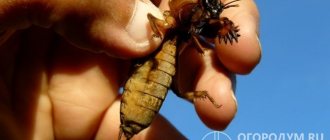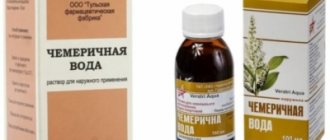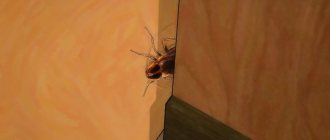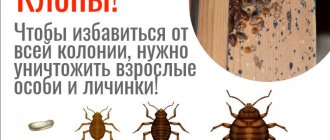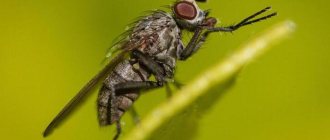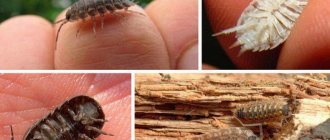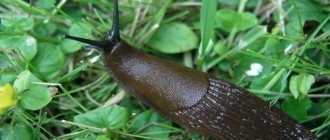Poultry owners know that members of the pheasant family often suffer from ectoparasites. In everyday life, these insects are known as chicken lice.
Chickens don't actually have lice. Parasites that live in bird feathers are feather eaters or lice eaters. These are two names for the same insect. Sometimes the names are compiled into “down-eater” or “feather-eater”.
What to do in such a situation? To get started, we recommend reading this article. This article describes in detail methods of controlling parasites. We also recommend that you consult a specialist. Read the article >>>
The difference between real lice and feather lice
Externally, the feather eater looks like a real louse, but these are representatives of two different orders with obvious differences:
- The feather eater's head is wider than the chest, the louse's is narrower;
- the oral apparatus of the pereater is of the gnawing type, while that of the louse is of the piercing-sucking type;
- the beetle eats dead skin particles and feather fibers, the louse drinks blood;
- The feather eater lives on birds, the louse on mammals.
There are similar features besides appearance. Both cause itching in the victim, and both live on the same host for their entire lives. They get rid of both with the same drugs.
Below is a photo of chicken lice - lice. And for comparison, a photo of a real head louse that parasitizes humans.
The belief that chicken lice live on humans is a myth. They can only accidentally fall on a person from the walls and ceiling of a heavily infested chicken coop or directly from a sick bird that was held in their hands.
In this case, lice do not live long. Until they fall to the ground, where they die of hunger. People are definitely not at risk of head lice after visiting an infested chicken coop.
The danger of chicken lice infesting humans
Can humans have chicken lice? This question is very relevant for people involved in breeding poultry in their backyards.
Chicken lice do not live in humans. There are cases of insect damage during the process of cleaning the chicken coop. Even if the pest somehow gets on a person’s head, it will be quite enough to simply wash the hair.
So, parasites pose absolutely no danger to people . But it is imperative to follow preventive measures in order to prevent the appearance of parasites in birds. This will significantly protect the household from unnecessary hassle.
Read more about how to independently understand that you have lice.
Symptoms of chicken disease
When the degree of infection is insignificant, fluff eaters practically do not make themselves felt: they do not affect the health, behavior and appearance of the carrier. But with intensive reproduction, the presence of parasites can be determined by the condition of the skin and plumage of chickens.
Typical symptoms of infection are:
- ruffled feathers;
- inflammation, redness, wounds, scratching on the skin;
- holes on individual feathers;
- necrosis and peeling of individual areas of the epidermis;
- partial loss of feathers;
- baldness in the anal area, on the head, neck, chest and abdomen;
- swelling of the eyelids, clouding of the cornea, purulent discharge from the eyes.
Infection with mallophages is evidenced by the restless behavior of chickens, which constantly scratch their beaks and paws, trying to remove insects from themselves. When parasites actively multiply, laying hens suffer loss of appetite, decreased body weight, and exhaustion, which negatively affects egg production.
Infected chickens suffer the infestation even more severely - they grow slowly, show no interest in food and practically do not gain weight. If treatment is not carried out in time, infection with mallophages will cause the death of the bird.
Pediculosis incidence peaks in autumn and spring.
The following factors contribute to infection and rapid reproduction of parasites:
- poor livestock care;
- unsanitary conditions;
- dampness in the chicken coop;
- poor diet;
- keeping a large number of chickens in a cramped poultry house;
- lack of free range;
- ignoring preventive measures.
Chicken lice can also appear after contact between birds and wild birds or rodents that carry ectoparasites.
Laying hens should be kept in direct sunlight or an incandescent lamp for 10-15 minutes if lice are suspected or for a routine examination. Mallophages love warmth, so they will certainly crawl closer to the light source and be clearly visible. In laying hens, you need to examine the skin under the feathers in the most vulnerable places where there is a concentration of down feather eaters: on the neck, cloaca, belly, and skin under the wings.
Biology of mallophages
Chicken lice are small wingless insects. They have a flat, round or elongated segmented body that is yellow-brown in color with dark stripes and spots. The head is wider than the body and has small antennae. The size of mallophages is from 1.5 to 2 mm. Three pairs of legs end in tenacious claws, with which the parasite is fixed on the host’s body. The insect also uses its jaws for this purpose.
Down-eaters feed on down, feathers, and exfoliated skin particles. They do not drink blood, but are able to swallow secretions protruding from scratches and abrasions.
The female lays white eggs, gluing them to the down, feathers or body. The length of the eggs is 0.5 - 1.5 mm, they are oval in shape and can be clearly seen under a magnifying glass. After 5-18 days, the eggs hatch into larvae that are similar in appearance to adults. Within 12-20 days, the larvae molt three times and turn into sexually mature mallophages.
The fertility of down-eaters is very high. One couple can produce up to 100 thousand offspring during their lifetime. The entire development cycle lasts about 25–30 days and depends on the temperature and humidity of the environment. The most favorable conditions are 25-30 °C and 70-78% humidity.
Mallophages spend their entire lives on the host's body. In the external environment they are able to exist from 2 to 4 days, less often up to 8 days.
Can lice eaters parasitize humans?
Mallophages on the human body or head cannot exist and reproduce. Human skin is thicker than chicken skin, making it difficult for the parasite to bite through it to provide itself with food. In addition, the pest's paws are not able to firmly grasp the hair or epidermis, so the larvae or adults will be washed away during the first bath.
The danger of ectoparasites for people is that they are carriers of helminths and bacteria that cause severe infections. Pathogenic agents can enter the human body through a single bite.
Children and the elderly are at risk: since their top layer of skin is thinner than that of young and middle-aged people, it is easier for parasites to bite through it.
The likelihood of infection with worms, salmonellosis, encephalitis, brucellosis, spirochetosis, Newcastle disease and other dangerous diseases increases when eating meat and eggs of infected chickens.
Why can parasites appear in humans?
Chicken lice, ticks and fleas, traces of their bites can be found on your own body. These parasites, capable of living and feeding on the bodies of chickens for years, cannot, of course, survive once on humans. The skin of people is harder, and the body temperature is lower, so insects are not able to feed, they die if they do not find “their owner” - a bird. Dogs, cats, and cows are also not suitable for chicken ectoparasites. And, nevertheless, everything possible should be done to get rid of them as quickly as possible, carefully treat the bite sites, and if swelling, fever, or other alarming symptoms appear, immediately go to the hospital.
After all, even an attempt to bite or damage to the skin can cause an exacerbation of some chronic diseases in the event of an allergic reaction or the penetration of viruses and bacteria into the body that are dangerous to humans.
How to get rid of chicken lice in a chicken coop
If lice manage to infest a chicken coop, then all the birds living there will suffer. Taking this into account, treating the chicken coop for lice is mandatory. To eliminate parasites from the walls and floor of the chicken coop, it is recommended to use smoke bombs. There should be no birds in the area during processing.
The calculation of the product is as follows: 1 checker (50 g) per room of 250 cubic meters.
In addition, it is advisable to wash the entire chicken coop area with any pediculicidal solution. The walls should literally be bathed in an antiparasitic agent. In advanced conditions, it is recommended to burn the walls and floor with a blowtorch.
A week later, the treatment of the chicken coop must be repeated. After thorough treatment of the premises, they begin to remove lice from chickens.
Struggle
Treatment of lice in chickens involves treating the birds with insecticides. It is better to use drug solutions by spraying the birds with them from a garden sprayer. The plumage should be evenly moistened.
Powders can also be used. They will have to be rubbed into the plumage of each chicken individually, while observing the recommended dosage. If possible, avoid getting the medicine in the eyes and nose.
When kept in cages, chickens are treated directly in the cages; when kept on the floor, they are sprayed on perches at night.
Drugs for treatment
- 0.25% aqueous emulsion of cyodrine;
- 2% aqueous suspension of entobactrin;
- 5-7% Turingin (read the visitor’s review in detail in comment No. 3 on this page);
- 0.05% dibromine;
- 0.3-0.5% aqueous solution of chlorophos;
- 0.5% permethrin emulsion;
- 0.7% dicresyl;
- 0.3% solution of trichlorometaphos-3;
- butox, neostomozan (in ampoules or bottles) - 1 ml per 1 liter of water;
- pyrethrum – powder;
- 7% sevin powder – 15 g per head;
- aerosol "Ecofleece";
- deltamethrin powder.
These insect repellents can be purchased at your veterinary pharmacy. Pyrethrum is also sold in regular pharmacies.
Insecticide solutions are used in the same dosages as those recommended for washing pets. In small farms, as a last resort, you can use flea drops - “Clandestine”, “Dana”, “Bars”, “Beafar”, “Frontline” and others. They need to be applied to the skin of each chicken once according to the weight of the bird.
As for household insecticides (aerosols such as Dichlorvos), it is better to postpone their use. Firstly, they can be toxic to poultry, and secondly, they will have high consumption, which is a financial burden.
The treatment of the chicken coop is carried out simultaneously with the treatment of the birds. Anything that is not afraid of fire is burned with a blowtorch or gas torch. All surfaces and bedding are sprayed with insecticide solutions:
- 10% aqueous suspension of pyrethrum;
- 0.25% aqueous emulsion of sevin;
- 0.5% aqueous emulsion of karbofos;
- Neostomazan, butox diluted 1:200.
Chickens must be removed from the premises during processing. After spraying, leave for several hours, and if possible 1-2 days. After exposure, change the bedding, wash the feeders and drinkers with water.
It makes sense to use such folk remedies in the fight against chicken lice only on small farms. However, in the conditions of private household plots they should not be neglected.
Preparing your chicken coop to combat chicken lice
If pediculosis is detected in chickens, then you need to spend a lot of time to first clean the chicken coop and kill all the parasites. First of all, poultry farmers should thoroughly clean out chicken droppings and litter residues.
Feeders, drinkers and other items used by birds also need to be thoroughly washed. When washing, you should use disinfectants, and it is also advisable to pour boiling water over them to remove nits.
If there is a pen next to the chicken coop, then it would be correct to remove the top layer of soil on it and take it away from the chicken coop. And sand and ash can be poured into its original place.
Symptoms of the lesion
If you suspect that chickens have worms, you need to observe the behavior and condition of the bird. There are common symptoms that occur when infested with helminths. First of all, appetite decreases and the bird looks noticeably worse. Chicken helminthiases of different forms manifest themselves in different ways. Main features:
- Decrease in productivity of laying hens
- The stool becomes liquid, yellowish, disturbances in the functioning of the digestive system are noticeable by sticky feathers near the anus
- Suppression of appetite is noted
- General weakness
- The comb changes color (to a pale red hue)
- Breathing becomes difficult.
How does egg contamination manifest itself?
The appearance of helminths in chickens is accompanied by a change in shell density. It becomes softer and quickly deforms. There is another sign of the appearance of worms in chicken eggs - the formation of clots. Often, helminthiasis can be determined without additional tests, by external signs.
Signs of the disease: loss of weight and appetite, diarrhea, loss of mobility, heavy breathing
Answers to popular questions
Inexperienced poultry keepers can be very confused when parasites appear in the area where the chickens are kept or on the birds themselves. Experienced veterinarians and farmers can tell you why lice appear and how to deal with them.
Where do lice come from?
The main reasons for the appearance of chicken lice:
- the coop room is too humid;
- litter is rarely removed from the chicken coop;
- chickens on dirty bedding get sick faster;
- the owners do not take good care of the chickens;
- the chicken coop is too small, cramped;
- the room where chickens are kept is never treated with disinfectants.
Sometimes lice appear even in clean and well-kept chicken coops. Sometimes they are brought there by foreign birds who want to profit from the feeder. Parasites from an infected bird spread to a healthy one, after which a dynamic process of reproduction in the feathers begins.
It is important to identify the pathological process at the initial stage, since advanced chicken lice is very difficult to treat.
How to deal with the disease
There are special remedies against these pests. They aim to paralyze the nervous system , ultimately leading to death. Such products are harmless. Most importantly, you must strictly follow the instructions.
If you choose drops as a remedy, then apply them to the bird’s body in some places. After this, the product spreads over the skin for some time. These drugs are not characterized by a systemic effect, that is, they do not spread throughout the body through the circulatory system.
However, this is not enough to exterminate pests. You need to know how to get rid of chicken lice in a chicken coop. To do this, you need to treat all surfaces in the room with a special liquid.
Folk remedies for fighting chicken lice
If there is a severe infestation, then it makes sense to use an insecticide with deltamethrin . It helps in the fight against lice and requires the preparation of a special solution. You must act according to the instructions. The substance must be applied to feathers using a special sprayer. The same medicine should be used to treat the room where the animals are located.
Chicken coop treatment
Remember that parasites are not only on the birds themselves, but also in the chicken coop. Insects and their eggs can be found in the litter, corners, and crevices, so the livestock and the chicken coop are treated simultaneously.
When carrying out the procedure, you need to proceed in stages:
- First, each chicken is processed and they must be moved to another room. If it's a warm time of year, you can send them out for a walk.
- Absolutely all litter is cleaned out.
- Next, you need to use a rake to thoroughly stir up the litter, after which it is treated with an insecticidal agent, which is also applied to the floor and walls.
- Then you should wait several hours, after which all organic matter is removed from the house and burned. Pre-treatment of the litter is carried out so that the insects die, otherwise during transportation they will fall out throughout the area and will soon fall on the chickens again.
- At the last stage, it is necessary to process all the elements; wooden ones are scalded with boiling water, but metal ones can be burned with fire; for this, a blowtorch or gas burner is used.
Only after these steps can a new bedding be laid. To carry out disinfection, it is allowed to use chlorine-containing products, but when using them, the bird can be returned to the chicken coop only after the chlorine has completely evaporated.
Quite convenient to use are smoke bombs that use cypermethrin, which destroys lice, ticks and other parasites. Among the most popular are Fomor-Vet and Peshka-V, which are effective, easy to use, and low in cost. Approximate consumption for 80 - 100 cubic meters. is 30 - 50 g. Carbonation takes 2 hours, aeration takes only 1 hour.
Treatment
In order to treat chickens for parasites, veterinarians recommend using the following drugs:
- "Felixan." Effective against daveniosis and rayetinosis. The medicine must be given once, mixed with feed, at a dose of 0.5 g/kg live weight of the chicken.
- "Phenothiazine." Prescribed for heterokidosis and prostogonimiasis. The drug can be fed in a group method, mixed with food, or individually poured into the oral cavity of chickens at the rate of 0.5 g for an adult bird. The bird tolerates this drug well.
- “Ivermectin”, “Piperazine”, “Hygrovetin”, “Alben”, “Albendazole”, “Brovalzen”, “Nilverm”. Used for ascariasis, heterokidosis.
- Brovadazole Plus. One drug combines piperazine and fenbendazole, a complex remedy against roundworms.
- "Levamisole 8%." The drug is given to chickens in drinking water if they are infected with roundworms.
- "Xylonaft". A drug used to treat chicken coops for heterokidosis.
The most effective, as practice shows, is the treatment of chickens with the help of special veterinary drugs
When using modern medications, there is no need to keep birds on a starvation diet, but the daily feed intake should be reduced by 1/3, in which case the mixture of feed and medication will be better eaten.
No matter how many chickens there are: ten or a thousand, if a helminthic infestation is detected, they must be treated. Do not attempt to diagnose or treat without the supervision of a veterinarian. Consult and conduct laboratory diagnostics, only in this case will your bird recover quickly and completely.
Chemicals
To treat head lice in chickens, veterinary drugs are used that are intended for birds, as well as for dogs and cats. You can buy them in the form of sprays and drops. Let's look at the most popular drugs that are highly effective.
Frontline
An effective drug that is used not only against lice, but also ticks, lice eaters and other parasites. The action is carried out thanks to the main active substance - fipronil, which affects insects by contact. You can purchase it in two versions, bottles with a sprayer, and polyethylene pipettes.
This preparation uses three active substances at once, which enhance the effect of each other, due to which the treatment brings the most positive result. You can buy it in the form of a spray or pipettes, which are produced in doses.
Neostomazan
Unlike the previous insecticide, this one uses two active substances, they are known for their powerful effect on different types of parasites. It can be purchased in glass ampoules and is prepared in the form of an emulsion solution.
Before use, you need to prepare a working solution; for this, add 1 ml of emulsion to 1 liter of water. Suitable for processing poultry, chicken coops and all equipment.
Dana spray
This product is made using a very strong insectoacaricidal substance - permethrin. Affects lice, lice and ticks by contact-intestinal method. You can buy it in the form of a spray; the cylinders are very easy to use.
Perol-A
An analogue of permethrin is used here, only the synthetic version is a pyrethroid. Available in the form of a spray, aerosol, dropper bottles. Used for treating chickens, chicken coops and accessories.
Butox
A synthetic substance is also used - deltamethrin. You can purchase it in the form of a concentrated liquid, drops, aerosol, spray. A working solution should be prepared from the concentrated liquid; the proportions are indicated in the instructions for use; changing the proportions and dosages is prohibited.
Celandine
It is worth saying that this product is intended to combat parasites on cats and dogs, but it can also be used on birds. The composition contains fipronil and permethrin, two very powerful insecticides that show high effectiveness.
Foxim or Sebacil
These two drugs have the same active ingredients and also have the same mechanism of action. Before the procedure, you need to prepare a working solution, which is applied by spraying or spraying.
Arpalit-Neo
Used to treat head lice in birds. Contains 2 active components at once - permethrin and fenoxycarb. In addition to fast and effective treatment, the drug provides protection against re-infection.
During treatment, the drug is applied to the withers, in the area where the bird cannot reach it with its beak. Over the course of a day, the medicine penetrates the body and accumulates in the skin.
Before using any insecticide, be sure to study the instructions for use; all dosages and proportions when preparing the working solution must be observed; any correction is prohibited, since they are calculated in such a way as not to harm the animal.
In addition to the above solutions, sprays, drops, you can also purchase powder, which is no less effective in the fight against lice. For example, Deltamethrin powder, which has proven its high performance.
To treat a chicken coop you need about 50 - 150 g of powder, for 1 chicken about 10 - 15 g. An analogue of Insectal powder is no less effective. They are the same in composition, dosage and method of use.
All insecticides allow you to get rid of parasites at all stages of development. But it should be remembered that eggs, thanks to their shell, are resistant to aggressive substances. Therefore, the treatment may not destroy the eggs, resulting in mature eggs reappearing after a few days.
For this reason, it is recommended to repeat the procedures; about 2 - 3 treatments should be carried out, depending on the degree of infestation; it is imperative to maintain a time interval between procedures, at least 7 - 12 days.
Promectin, an oral drug that contains 1% ivermectin, also showed good results in the fight against lice. So, a solution is prepared from this substance, which is fed to the bird throughout the day. It is recommended to repeat after two weeks as a preventive measure. The advantage is that it is very easy to use.
Internal parasites of chickens
Internal parasites, also known as worms, are divided into three groups: flat, tape and round. Worms are not only those that live in the gastrointestinal tract, but also those that settle in the liver, lungs and even the circulatory system. The largest of them are intestinal worms. Often these worms can be easily seen with the naked eye.
Chickens become infected with worms, as a rule, by eating shellfish while walking in the wild. Chickens can also become infected from each other. This is especially true for chickens that try to peck everything.
The roundworm above in the photo can be called the lightest of all types of worms. Getting rid of roundworms is quite simple. Theoretically, even folk remedies in the form of garlic can work, but it is better to use medications. Garlic does not always work against worms, and even roundworms can kill their owner if too many worms accumulate in the intestines.
Symptoms of chicken infestation with worms can be:
- exhaustion;
- yellow diarrhea;
- pale comb and earrings;
- decreased egg production of chickens;
- the appearance of soft-shelled eggs;
- general weakness;
- loss of appetite or, conversely: increased appetite with progressive exhaustion.
With ascariasis, constipation is an alarming sign; it can be caused by roundworms huddled together in a ball. In this case, it is recommended to slaughter the chicken, since the ball of worms will not come out on its own, and abdominal operations are not performed on chickens.
Chickens affected by worms may fall on their feet due to weakness.
Due to constant diarrhea caused by parasites, the soiled skin around the cloaca becomes inflamed in chickens.
Ascariasis is the most common helminthic disease. Its main danger is intestinal obstruction in chickens. Much more exotic is drepanidoteniasis, caused by tapeworms.
Drepanidoteniasis
Symptoms: intestinal dysfunction; impaired coordination of movements; at the end of the disease there is paralysis.
Tapeworms are much more difficult to get rid of than round worms, and garlic is no help here. The danger of tapeworms is that even with the use of sufficiently strong anthelmintic drugs, the worm can shed its entire body, leaving only the head attached to the wall of the chicken intestine. From the head of the worm, the segments of the parasite's tape body will grow back.
Thus, getting rid of the tape parasite using folk remedies is impossible, but modern drugs, at a minimum, involve control over the vital activity of the worm.
Do chickens need to be treated for worms, how often and with what medications?
When treating chickens with anthelmintics, owners rid the birds of worms only temporarily. Sooner or later, these parasites will infect chickens again. However, deworming is necessary to maintain chicken productivity.
Due to the fact that broilers have a lifespan of 2 months, regular deworming for these chickens is not relevant. It is enough to carry out treatment against parasites according to indications. Laying hens need to be dewormed once every 4 months, since even hens that are not roaming can become infected with worms through contaminated feed or from rats.
After deworming, all bedding of the chickens is cleaned, and the floor and, preferably, the walls of the chicken coop are thoroughly disinfected to destroy parasite eggs. The litter and droppings are burned.
Folk remedies
Of course, in addition to specialized insecticides, there are traditional methods that have been successfully used for many years. Let's look at the most popular and effective ones.
Kerosene
Kerosene is a fairly popular product that is used in the fight against lice not only on poultry, but also on people. It works as follows: upon contact with an insect, kerosene envelops it and blocks the respiratory tract, which leads to rapid death.
In addition, the aggressive substance partially dissolves the shell of the eggs, which contributes to the weakening of the offspring. During the procedure, each chicken is processed separately. Also, as a preventive measure, prepare a mixture of kerosene, benzene and ammonia, then apply a couple of drops to the withers.
Vinegar
For this recipe, regular 9% vinegar is used, from which the working solution is prepared. To do this, you need to dilute it with water in a ratio of 1: 2 or 1: 1. Next, the solution is poured into a spray bottle and the plumage is sprayed. It is also used to treat the chicken coop. This recipe shows the same effectiveness as kerosene.
Ash and sand baths
A very popular method of combating lice and other parasites that are found on the plumage and legs of laying hens. The advantage is that the application procedure is very easy, since the chickens take baths on their own.
For such baths, large basins, pallets, boxes, etc. are suitable. The following mixture is used as a filler, sand and hall are mixed in equal parts, then a little loamy soil and peat are added.
It is worth saying that folk recipes show good results if there are no more than 20 laying hens. If the livestock is large, 100 or more, it is certainly better to use specialized preparations.
Herbs and plants
Some herbs and plants have a fairly rich and pungent aroma, which parasites really don’t like; they try to leave the area where they smell them, mistaking them for danger.
Therefore, as a preventative measure, they can be used in chicken coops, these include:
- Tansy.
- Sagebrush.
- Chamomile.
- Rosemary.
- Ledum.
Since the odors will gradually disappear, the plants need to be replaced from time to time with freshly picked ones. These herbs are also natural insecticides and are often used in the form of decoctions.
You can prepare the following decoction:
- You need to take chamomile, wild rosemary and tansy, chop them and put them in a large saucepan.
- Pour 6 liters of boiling water over the herb, put on fire, bring to a boil and cook for 15 minutes.
- Next, the broth is cooled and filtered.
Use for treating poultry houses and all accessories.
Essential oils, which act on the same principle as aromatic herbs, have proven themselves to be effective. Eucalyptus or rosemary oil work well; you need to add a few drops to the water and spray the enclosure.
Another natural insecticide is Dalmatian chamomile, which can be purchased at pharmacies and is sold under the name Pyrethrum. This is a potent substance that destroys lice, fleas, and ticks in mammals and birds. In addition, it is effective against bedbugs, ants, cockroaches, etc.
Parasite removal methods
When dealing with the problem of what to do if a bird is infected with helminths, you need to analyze the biomaterial. In such cases, veterinary drugs are immediately prescribed. They should be given only as prescribed by a doctor, in a certain dosage, since anthelmintic drugs are toxic. You can remove worms from chickens with improvised medicines that are prepared at home. This method is effective in the early stages of development of a parasitic disease.
Chemicals
Chickens are treated for various worms using the following means:
Flubenvet
It is added to food. The drug is effective against various forms of helminthiasis. It destroys helminths in laying hens at all stages of worm development, including eggs. The medicine is offered in powder form with different concentrations of the active substance: 1% and 2.5%.
Levomisole-plus
It is dissolved in water, which simplifies the task of introducing the drug into the bird’s body. This product can be added directly to the drinker.
Piperazine
This is a common medicine, easy to use and relatively inexpensive. It can be given to chickens, other poultry and pets. Sufficient dosage: 1/3 tablet per 1 kg of bird body weight. The medicine can cure young birds and adults.
Pirantel
Removal of parasites occurs in three approaches. You can eat chicken meat 2 months after the end of treatment; eggs are cleansed faster: they can be eaten after just four days.
Traditional methods
If chickens have worms, their treatment should be carried out comprehensively. Traditional recipes are also suitable for this. A treatment course is based on home remedies (but only in the early stages of a parasitic disease) and worm prevention is carried out.
List of products that are introduced into the diet to remove helminths:
- pumpkin seeds
- Chopped green onions
- Garlic – finely chopped
- Wild garlic and lingonberries
- Pine decoction.
To prepare the decoction, you need to pour boiling water over the raw materials. Pumpkin seeds are first crushed, infused in water for several hours and given to the bird. Oxalic acid and chamomile decoction are no less effective. By using these means it is quite possible to avoid infection with helminth eggs.
Useful video: About chicken diseases
Methods for removing worms from chickens
When deciding how to treat worms, you can consider different methods. Both chemicals and folk remedies are used. The dosage will be less, since the amount of medicine is calculated based on the body parameters of the bird. The larger it is, the greater the dose. The duration of treatment is the same as in the case of adults. After some time, you need to repeat the course.
There are relapses of the parasitic disease, which can occur when larvae develop from previously laid helminth eggs. This happens with severe infestation. To prevent such consequences, it is necessary to carry out multiple treatments (3 or more times) with breaks.
Thus, helminthiasis in chickens is a fairly common disease. It can be identified by a number of signs, including weakening of the body, deterioration in the appearance of the bird, and weight loss. The intestines are most often affected, but other organs may also be affected. In this case, more serious diseases develop: the liver suffers, breathing becomes difficult, etc.
Helminths also invade developing eggs. At the same time, their shell becomes softer, quickly breaks down, and after opening the shell, nodular formations are found inside. In case of severe infestation, tests are not required, since helminths can be detected in feces and eggs.
Preventive actions
Of course, 100% protection does not exist, but preventive measures can significantly reduce risks, these include:
- Containers are placed in the chicken coop into which a mixture of sand and ash is poured. Also remember that laying hens should be able to take dust baths.
- Enclosures must be protected from rodents to exclude any possibility of rats and mice entering.
- You should also ensure that there is no contact with wild birds, which often cause infection.
- Regular cleaning, replacement of bedding is mandatory, air humidity must be monitored, and cleaning should also be carried out in nearby areas.
- It is recommended to carry out preventive antiparasitic treatment 1, 2 times a year.
- Feeders and drinkers are washed and disinfected daily.
- You should be careful when visiting other poultry houses; be sure to change clothes and shoes after such visits.
- Preventive examinations are carried out; if an infection is detected in at least one laying hen, the entire flock is treated.
- The bird’s immune system should be strengthened; for this purpose, special fortified bait is given in autumn and winter.
- It is necessary to first treat purchased laying hens with an antiparasitic agent, and only then place them with the others.
As you can see, chicken lice can cause huge problems, so it is easier to prevent this situation than to deal with it later. If an infestation is detected, measures must be taken immediately, preventing parasites from multiplying.
It is possible to defeat parasites!
Antiparasitic Complex® - Reliable and safe removal of parasites in 21 days!
- The composition includes only natural ingredients;
- Does not cause side effects;
- Absolutely safe;
- Protects the liver, heart, lungs, stomach, skin from parasites;
- Removes waste products of parasites from the body.
- Effectively destroys most types of helminths in 21 days.
There is now a preferential program for free packaging. Read expert opinion.
Read further:
Sanitation for pediculosis: algorithm for treating the patient and the room
Domestic insect parasites: photos and names, control methods
Thiabendazole: instructions for use, active ingredient, price and analogues
No to ticks: where to order insect repellent treatment?
Insects parasites of humans and animals: types, description and methods of control
Ointments for the treatment of staphylococcus: popular means for treating the disease
